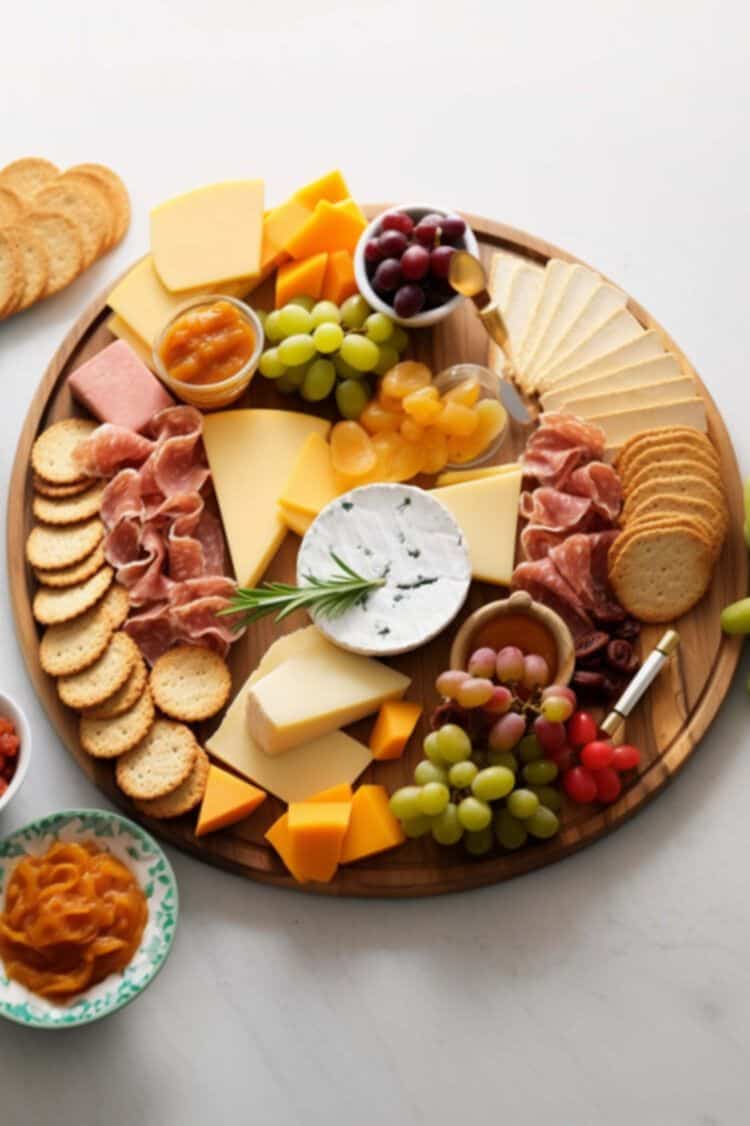It’s easy to make a cheese board for happy hour gatherings and cocktail parties. It has such an enticing variety of flavors and textures for everyone to enjoy.

Whether you’re having a small get-together or a big celebration, a well-made cheese board can make the event extra special.
Designing the Cheese Board
Designing a cheese board for happy hour is all about combining flavors, textures, and aesthetics. By carefully choosing cheeses, pairing them with tasty accompaniments, and presenting them in way that looks amazing, you can create a spread that will impress your guests.
Feel free to experiment with different combinations and variations to find your own unique style.
Choosing the Cheeses
To make a fantastic cheese board, start by picking different types of cheeses that have different tastes and textures. Here are some popular options for each category:
- Soft: Brie, Camembert, Goat Cheese
- Semi-Soft: Gouda, Havarti, Fontina
- Hard: Cheddar, Manchego, Parmesan
- Blue: Roquefort, Gorgonzola, Stilton
Pairings and Accompaniments
To make your cheeses even more delicious, include some complementary pairings and accompaniments. Try some of the following:
- Fresh Fruits: Sliced pears, grapes, figs, or berries add a sweet and refreshing touch.
- Nuts: Almonds, walnuts, or pecans provide a crunchy and nutty flavor.
- Cured Meats: Prosciutto, salami, or chorizo can be sliced and arranged alongside the cheeses.
- Crackers and Bread: Offer a variety of options like sliced baguettes, water crackers, and whole-grain crackers.
- Spreads and Preserves: Honey, fig jam, or fruit chutney can be spread on bread or paired with specific cheeses.
Dietary Restrictions
A good meat and cheese board should have something for nearly any diet, but it’s best to check with friends to find out exactly what they will and won’t eat. A few notes to help:
- Meat and cheese are the opposite of vegan, but they are gluten free.
- Fruit and nuts are vegan, and should be okay with anyone who isn’t allergic to either.
- You could offer gluten-free bread or crackers as an option for those who don’t eat gluten.
- You can look for cured meats that are kosher or halal, but they’re not always available.
- There are dairy free cheeses made from nuts and soy for vegan diets.
Presentation Tips
An attractive presentation is important for an enticing cheese board. Consider these tips:
- Use a wooden or marble board as a base for your cheeses.
- Arrange the cheeses in different shapes and sizes to make it look interesting.
- Provide separate cheese knives for each cheese to prevent flavors from mixing.
- Place the accompaniments strategically around the cheeses for easy access.
- Add some fresh herbs like rosemary or thyme for a touch of green.
Serving Tips
There are a few things you can do to make sure your cheese board stands out and is delicious.
- Let the cheeses come to room temperature before serving to enhance their flavors.
- Encourage your guests to try different combinations by providing small plates and napkins.
- Give brief descriptions of each cheese so that guests can appreciate their unique qualities.
- Encourage conversation and sharing of favorite pairings among guests.
Cheese Board Variations
While traditional cheese boards are always great, here are some variations that can add excitement and cater to different tastes:
- Mediterranean-Inspired: Include feta cheese, olives, sun-dried tomatoes, and hummus.
- Seasonal Delights: Incorporate seasonal fruits and vegetables like roasted butternut squash or fresh cherries.
- International Flavors: Explore cheeses from different countries such as Gouda from the Netherlands or Roquefort from France.
Tips for Leftovers
If you have any leftover ingredients from your cheese board, which would be surprising, here are some creative ideas to make the most of them:
- Make a cheesy pasta dish by melting leftover cheese into a creamy sauce.
- Create delicious grilled cheese sandwiches using the remaining bread and cheese.
- Blend leftover cheese with herbs and spices to make a flavorful cheese spread.
